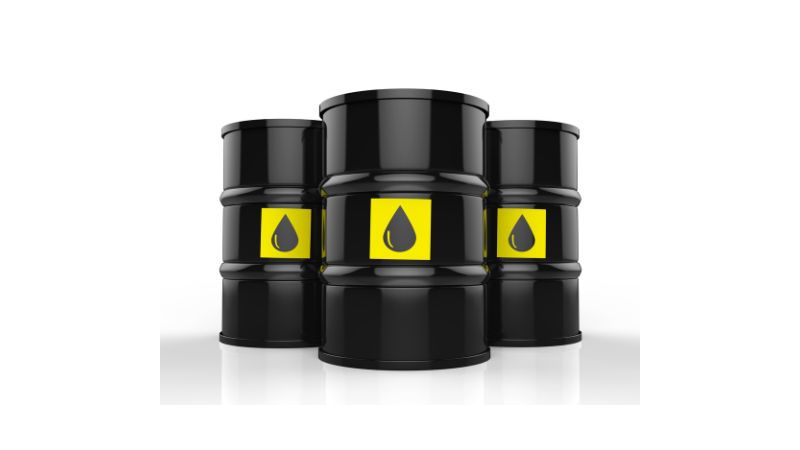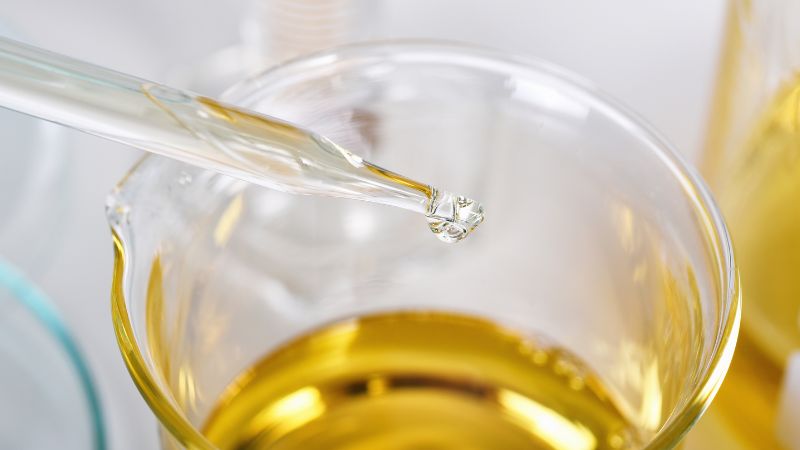Almost every lubricant consists of a base oil. The base oil category determines what the oil is made of, how it is formulated, etc. Generally, lubricants contain 90% base oil and 10% additives. The American Petroleum Institute (API) classifies base oils into five groups specified by saturation, sulfur level, and viscosity index.
The first three groups of petroleum are refined from crude oil. Group 4 base oils are fully synthetic. Additionally, Group 5 is totally different from Groups 1 to 4. But if you want to know group 3 vs. group 4: what’s the difference between them? Stay here, please.

What Is Group 3 Oil?
Group 3 base oils have a viscosity index greater than 120. Refining through a process known as intensive hydrocracking, which uses more pressure and heat. As a result, you can get much purer base oil. Due to their higher stability and molecular uniformity, you are making them standard for some semi-synthetic oils.
Unfortunately, some people think that Group 3 base oils are synthetic. However API classifies them as mineral oils because they are refined from crude oil. They mimic the properties of synthetic oils with a high viscosity index.
Many consider only Group 4 and Group 5 base oils “synthetic”.Some Group 3 lubricants outperform Group 4 lubricants if they contain excellent anti-wear, antioxidant, and other additives.
Consequently, if some group 3 oils contain outstanding antioxidants, anti-wear, and other additives, they outperform the group 4 oils. Like Group 2, Group 3 base oils have an informal Group III+, which consists of Group 3 oils with a “Very High Viscosity Index (VHVI) .”The very high viscosity index minimum is anywhere between 130-140.
What is Group 4 Oil?
There are differences between the first three base oils groups; group 4 is a far more significant improvement than any others. A group 4 base oil is also called a PAO (Poly-alpha-olefin).
In particular, this synthetic oil has a high viscosity index, excellent low-temperature flow, and oxidation stability. Group 4 base oils are synthetic-type oils composed of polyalphaolefins (PAOs). And this oil’s viscosity index is 125-200. However, they aren’t taken out from crude oil but are made from smaller identical molecules.
This oil’s uniformity and manufacturing also allow for predictable characteristics that ensure performance under harsh conditions. The extreme temperature strength properties make them excellent for cold and hot climates.
Group 3 Vs. Group 4: What are The Differences?
All oils begin as one of five different base oil types, as defined by the (API) American Petroleum Institute. Considerable differences are effective after manufacturers take the base oils, add other compounds, and label them. So what exactly is the difference between group 3 vs. group 4 base oils? Let’s discuss this:
Group 3 oil provides improved performance but has limitations compared to group 4 oils. Yet, they offer great thermal strength, oxidation resistance, and improved wear protection. They are also less expensive than Group 4 oils. For this reason, many people prefer this oil for their many applications. Similarly, group 3 oils are compatible with various automobiles and tools, making them accessible to many consumers.
In contrast, Group 4 oils provide extraordinary performance and protection in demanding conditions. Moreover, they contain a higher viscosity index to maintain viscosity perfectly in a wide temperature range. Plus, they provide extreme thermal strength and film stability than group 3 oils. Mainly, Group 4 oils are ideal for high-performance and heavy-duty engines.
Group III Vs IV Vs V:
Actually, Groups I, II, and III are derived from crude oils, and Group IV is a full synthetic oil. On the contrary, Group V is for all base oils not included in the other groups. Besides, Group III oils are made within a longer process, and the hydrocracking process is more severe. During the refinery process, it needs extra heat and pressure. After a longer process, we get high-quality pure base oils.
In general, Group IV base oils are polyalphaolefins oils. This is the most significant benefit of PAOs, as they can be made into a structure with predictable features. Most importantly, you can use them in extremely cold or hot conditions.
In contrast, Group V oils consist of any base oil other than previously defined groups. It can be synthetic and can’t be PAO, but it’s a group V base oil. Naphthenic oils and esters are these oil ingredients to make. Generally, Group V oils are not used as base oils but as additives to other base oils.
Group III VS PAO:
Polyolefin(PAOs) contains higher oxidation resistance than Group III oils because of their linear structure and lack of aromatic compounds. They are completely saturated, so points in the hydrocarbon chain don’t exist.
PAO delivers excellent oxidative strength and cold-temperature performance. However, you can improve these things in Group III bases by using additives and PPD. If you need both, you’ll probably choose PAO. They will require less “assistance” in the cold temperatures than Group III bases.
We see this with many lubricants that, when refurbished, use GTL more than PAO, which is less expensive. Also, Group III, although weak additive reactions like PAO are not prone to seal shrinkage. So you have more freedom with the rest of the formulation and can avoid using esters to counteract it.
List Of Group 4 Oils Brand:
Group 4 oil is among the highest quality and most developed lubricants available. Made by polymerization of alpha-olefins, resulting in exceptional performance characteristics. Here we will explore a notable Group 4 oil brands list that are leaders in the industry.
Amsoil:
Amsoil is a well-known brand that provides many Group 4 synthetic oils. They are famous because they offer fantastic thermal strength, excellent oxidation resistance, and a high viscosity index. Due to extraordinary wear protection features, they ensure improved performance and extended engine life. If you use their oils, you can get enlarged drain intervals and lower maintenance costs.
Royal Purple:
Royal Purple is another famous brand that produces group 4 synthetic oils. Their oils provide ultimate safety and performance in extreme conditions. In addition, they deliver outstanding film strength, reduce metal-to-metal contact and reduce wear.
Red Line:
The most respectable brand of group 4 oils on our list is the Red Line oil, which is suitable for high-performance applications. Furthermore, their oils give excellent shear stability, ensuring consistent viscosity and protection. Their brands also provided incredible thermal strength and resistance like other brands. So you can get clean and more efficient engines by using their oils.
Castrol EDGE:
You can find Group 4 synthetic oils from this famous Castrol EDGE brand. Their synthetic oils also offer ultimate protection under extreme conditions. Additionally, Castrol EDGE oils provide excellent viscosity stability and improved fuel efficiency. You can use their oils in high-performance engines and demanding applications.
Mobil 1:
Mobil 1 brand is known for its high-quality synthetic oils. You can find a range of Group 4 synthetic oils from this brand. All oils offer outstanding protection against engine wear, high-temperature stability, and improved fuel efficiency. Notably, their oils are used widely in the automotive industry. They are well known for their excellent performance and longevity.

Group V Ester Synthetic Oils:
From esters, group v ester oils are made. Group V ester synthetic oils provide extraordinary lubricity, cleanliness, oxidation resistance, and compatibility with sealing materials. All these features are highly suitable for demanding applications like racing cars, aviation, high-performance engines, and industrial equipment.
When you want to purchase group V ester synthetic oils, you should consider some crucial factors. The essential elements are manufacturer recommendations, specific application requirements, and industry standards. Usually, when selecting V ester oil, it will be best to consult with lubricant experts and manufacturer’s guidelines. In this way, you can increase your engine longevity and performance.
Group V Synthetic Oil List:
Accordingly, Group V synthetic oils are specific synthetic lubricants known for their extraordinary performance and high-quality properties. Let’s discuss some group v synthetic oils:
Esters:
Esters are widely used synthetic oils because of their outstanding lubricity and thermal strength. Hence, they deliver exceptional protection against wear, corrosion, and oxidation. Undoubtedly, you can use them in high-performance aviation and racing applications.
Polyalkylene Glycols (PAGs):
PAG-based synthetic oils are best for their thermal and oxidative stability. Even so, they deliver terrific lubricity and viscosity stability. Subsequently, you can use these oils in hydraulics compressors and gear systems under extreme conditions.
Polyol Esters:
Polyol ester-based group v synthetic oils offer outstanding shear stability, high resistance, and low volatility. Likewise, they are commonly used in aircraft engines, refrigeration compressors, and other applications that need extraordinary lubrication.
Phosphate Esters:
Phosphate ester synthetic oils are fire-resistant and provide extraordinary thermal and oxidative strength. Thus, if you want an oil that provides fire protection, you can use it. These phosphate esters are best used in hydraulic systems and industrial applications.
Base Oil price
The base oil price enables you to know the current price. Get a global view of the market with current base oil prices so that you can trust them. Notably, the current price of base oil is US$ 1,099 per year. To get current global base oil pricing data weekly, subscribe to Base Oil Pricing Data.
FAQ (Frequently Asked Questions)
Q. Which group of base oil is best?
There are comprehensive performance differences between base oil group categories. Generally speaking, Group IV is the best oil, and Group III is the second-best base oil.
But beware – there are exceptions. And you can only judge a motor oil’s performance on the base oil type. You must consider its complete formulation, including additives.
Q. Is Group 3 base oil synthetic?
API Group III base oils are hydrocracked crude oils containing less than 0.05% sulfur and more than 90% saturates. Synthetic oils are not from refined, hydrotreated crude oil.
They may be coming from polyalphaolefins, polyalkenes, phosphate, polyalkye glycols, esters, polyesters, or other synthetic bases oil. Although manufactured from crude oil, Group 3 oils are sometimes described as synthetic hydrocarbons.
Q. What is Group 3 base oil used for?
In particular, you can find group 3 oils in high-quality motor oils, transmission oils, and certain industrial oils. Hence, you also can find them in the lubricant, chemical industries, and construction.
Final Word:
When choosing between Group 3 vs. Group 4 oils, you should consider the needs of your machinery or motor. If you want excellent safety, increased performance, and comprehensive drain intervals in extreme conditions, go for the Group 4 oils.
On the other hand, for general automotive applications, choose group 3 to get good performance and affordability. Consulting with an oil specialist or manufacturer’s recommendations can help you to determine the best one for you. Ultimately, we hope you know now about different groups of base oil. Before using one group, consider what is your preference.
